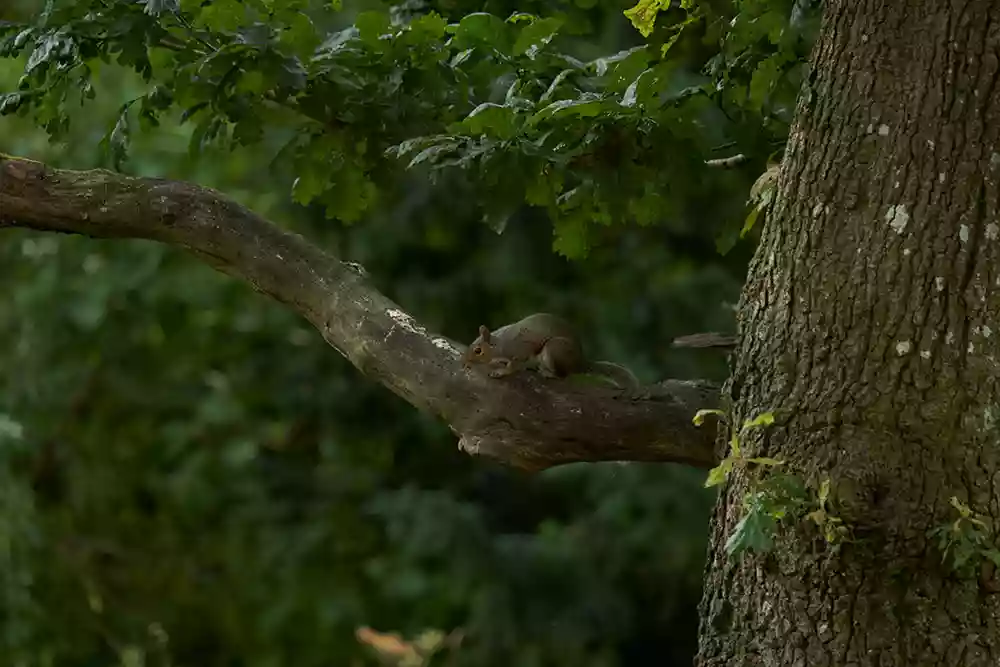- Call us: 01444 237070
- Contact Us
- Stores
- Sign In / Register
-
- Back
- Used Cameras
- Used Accessories
- Used Lenses
- Used Video
- Used Film Equipment
- Used Stock Alert
- Used Blank Test
- Sell or Part Exchange
- Used Clearance
- Recently Added Used Equipment
- Park Picks
- All Used Black Friday Deals
- Faulty
- Trade-In
- Blog
- New in
- Call us
- Contact us
- Stores
- Sign in
- Categories
- Tips & Inspiration
- Reviews
- News
- Events
- Features
- Buying Guides
- Competitions
New Sigma 150-600mm f/5-6.3 DG DN OS Sports Lens
If you’re a super telephoto shooter it’s time to start celebrating. Sigma just announced the new Sigma 150-600mm f/5-6.3 DG DN OS Sports Lens for Sony E and Leica L full frame mirrorless cameras. In this post we take a deeper dive into lens specifications, controls, features and some gorgeous full size image samples from Simon Roy, so you can get a better idea of this cracking new professional lens from Sigma.

New mirrorless design for a classic Sports Super Telephoto Zoom Lens
The original 150-600mm F5-6.3 DG OS HSM for DSLR cameras has been out since 2014 being released for all major camera systems along the way. It has been extremely well regarded by the majority of users, so Sigma had an excellent platform when they began a ground-up redesign for mirrorless cameras.

Sample image 1 Bullfinch. Focal length: 410mm. Camera settings: 1/200 sec. f/6.3. ISO 640.
The newest model for Sony E Mount and Leica L mount was announced in August 2021 to quite some fanfare as many Sigma fans have been waiting for this moment for some time. The ‘Sports’ denomination refers to a bright, pro optical design, fast AF motors to capture fast moving subjects even far away and customisable controls on the lens barrel for a personalised workflow.

100% crop, with beautiful feathers
Who is the 150-600mm f/5-6.3 DG DN OS Sports Lens for?
Typically users of this lens are going to be serious enthusiasts and professional photographers. It’s a strong offering from Sigma, and their Sports moniker is aimed at professionals, so we can expect pro-quality results. This type of focal length zoom can be useful for subjects including:
- Sports
- Action
- Wildlife
- Bird photography
- Tele-macro close-ups
- Aircraft / trains / vehicles / motorsports
- Paparazzi
- Surveillance
- Landscape <- I have been waiting for a lens like this for landscape photography!
- Portraits / lifestyle / fashion in a pinch if your subject is suitably distanced from the background

Sample image 2 Baby Blackbird. Focal length: 356mm. Camera settings: 1/160 sec. f/5.6. ISO 400.
Comparison table between original DSLR and new mirrorless lens versions
|
|
150-600mm f/5-6.3 DG OS HSM (DSLR model) |
150-600mm f/5-6.3 DG DN OS (mirrorless model - 2021) |
|
Lens Construction |
24 Elements in 16 Groups, (2 FLD and 3 SLD) |
25 elements, 15 groups, (4 FLD and 2 SLD) |
|
Angle of View (for SD1) |
16.4º (W) -4.1° (T) |
16.4° (W) - 4.1° (T) |
|
Number of Diaphragm Blades |
9 (rounded diaphragm) |
9 (rounded diaphragm) |
|
Minimum Aperture |
F22 |
F22-29 |
|
Minimum Focusing Distance |
260cm |
58cm (W) – 280cm (T) |
|
Maximum Magnification |
1:5 |
1:2.9 |
|
AF motor |
Hypersonic |
Stepping motor with high-precision magnetic sensor |
|
Optical stabilisation |
4-stops (assumed) |
4-stops |
|
Weather sealing |
YES |
YES |
|
Filter Size |
φ105mm |
φ95mm |
|
Teleconverter |
YES |
Only L Mount version |
|
Dimensions |
φ121mm x 290.2mm |
φ109.4mm × 263.6mm |
|
Weight |
2,860g |
2,100g |

Again look at those feather details in this 100% crop
This table demonstrates a few of the advantages which are bestowed on the mirrorless version over the DSLR lens. It’s a wee bit more compact (26.6mm) and considerably lighter (760g) with a smaller (AKA cheaper) filter thread size of 95mm. Magnification and minimum focus distance are both excellent with the mirrorless 150-600mm f/5-6.3 DG DN OS Sports version. This allows you to use the lens for tele-macro type close-up photography and videography. Both lenses feature push / pull zooming as well as traditional ring based zooming as well as a number of switches and customisable buttons. The mirrorless version has no less than three AFL buttons which can be programmed. The latest model also includes a new Zoom Torque switch, which will appeal to those who want to fine tune ring based zooming.

Sample image 3 Wild Hare. Focal length: 600mm. Camera settings: 1/125 sec. f/6.3. ISO 1000.
The full line-up of lens controls include:
- Focus Mode switch
- Focus Limiter switch
- OS switch
- Custom Mode switch
- AFL button (3 buttons)
- Zoom Torque switch
- Zoom ring lock

This 100% crop shows beautiful fur covered skin with excellent detail in the eyes at 600mm on the Sony A7R III boasting 42 megapixels.
Image quality is going to be very similar, with signatory Sigma lens sharpness and well controlled aberrations. The optical formula has been updated for mirrorless cameras but remains similar and should deliver equally top-level results. Sigma has concentrated on sharpness, flare control as well as bokeh for this super telephoto. Longer lengths lend themselves to subject separation and the aperture range is definitely adequate for those purposes, particularly combined with the 9-blade rounded design.
Sigma Super Multi-Layer Coating is added to control ghosting and flare, which works well although you’ll probably keep the lens hood on for the most part.

Sample image 4 Gannet in Flight. Focal length: 352mm. Camera settings: 1/4000 sec. f/5.6. ISO 500.
AF Functionality
One of the biggest selling points for any telephoto lens is its ability to acquire focus and track your subject. To this end Sigma is utilising the esteemed Sony hybrid phase detect AF and Leica L Mount which Panasonic Lumix, Sigma and Leica cameras employ.
Inside the lens there’s an AF unit equipped with a high-precision magnetic sensor, combined with an OS (Optical Stabiliser) function, which is good for 4-stops of stabilisation. The AF actuator is controlled by a stepping motor, which delivers fast and quiet Autofocus. It is particularly impressive considering the reach of the lens and you can set three types of zone modification with a switch. For those who sometimes need to adjust focus manually the lens supports DMF and AF+MF. The results are a lens with very strong, rounded performance to suit various subjects.

You have to admire the photographer’s skills combined with an excellent performing lens at 352mm 1/4000 sec with 100% sized details.
Arca Swiss Type compatibility
Praise the heavens that this new model from Sigma comes with an Arca-type magnesium tripod socket straight out of the box! I am not sure why it’s taken so long for lens manufacturers to add this type of connector, but I can only say I am glad to see a recent rise in this trend. This means you can slot the foot into Arca-type plates for mounting on your favourite tripod, monopod and of course gimbals like the ever popular Benro GH2 Aluminium Gimbal Head and others.

Sample image 5 Squirrel. Focal length: 359mm. Camera settings: 1/160 sec. f/5.6. ISO 640.
There is also a longer foot which is for Arca-type screw knob plates only available if you need a longer base with more balancing options try the Tripod Socket TS-81.

This 100% crop shows sharpness that is enough to cut!
Features for outdoor shooters
Naturally this lens will be found out in the field for a substantial amount of the time and it needs to be robust. Luckily Sigma has an excellent history of developing lenses which continue working even when the weather heads south. The illustration shows the points where Sigma has applied gaskets and weather sealing to combat moisture and dust penetration. There’s also a water and oil repellent coating on the front element as we have come to expect from higher quality lenses. If you shoot in rain, snow and fog (otherwise known as UK summertime), you’ll be happy with ongoing performance.

The lens body is manufactured with parts made of aluminium and Thermally Stable Composite (TSC). This TSC polycarbonate allows the lens to maintain consistent functionality in a range of temperatures.
Accessories
Lucky L Mount users get to add a teleconverter and USB dock to their set up. The TC’s are available in traditional 1.4x or 2.0x magnification. We’ve mentioned the extended lens tripod socket already and you can also get a replacement lens hood, soft case and of course any number of filters, even from Sigma themselves.
Here’s a handy list of the products now available from Sigma mentioned in this post together with several filters:
- Sigma 150-600mm f/5-6.3 DG DN OS Sports Lens for Sony E
- Sigma 150-600mm f/5-6.3 DG DN OS Sports Lens for L Mount
- Sigma TC-1411 1.4x Teleconverter for L-Mount
- Sigma TC-2011 2x TeleConverter For L-Mount
- Sigma USB Dock UD-11 for L-Mount
- Sigma WR Ceramic Protector Filter 95mm
- Sigma 95mm WR Protector
- Lens Hood LH1034-01
- Cover Lens Cap LC-747E

There’s enough here to cater for anyone who loves shooting super telephoto subjects and we hope you really enjoy your new gear! While you’re here why not check out our events page for upcoming wildlife, competitions and other subjects of interest. Our camera gear reviews section is also packed with gear deep dives, reviews and specs for all manner of equipment.
Image samples all shot with the Sony A7R III with a testing 42 megapixels and the Sigma 150-600mm f/5-6.3 DG DN OS Sports Lens for Sony E Mount ©Simon Roy.
*UPDATE
Hands on in the field with the Sigma 150-600mm f/5-6.3 Sports Lens for Sony E
I was lucky to get an early copy of the Sigma super telephoto for Sony to test out in the field. Unfortunately I only had it out for less a couple of hours, but I did manage to head to a local park and try some different styles of shooting.

Butterfly. Focal length: 600mm. Camera settings: 1/320 sec. f/7.1. ISO 640
As a sports lens it’s primarily intended to be used for (fast) moving subjects, which as a landscape photographer puts me at the complete opposite end of the spectrum. That said I’m definitely on the lookout for a versatile general purpose super telephoto zoom lens to capture tele-macro, occasional birds and wildlife subjects, as well as general telephoto subjects when opportunities arise. The photos included here are not my finest hour, but they give an idea of what you can get from this big zoom just walking around for a couple of hours. All images are straight out of camera without any edits and 100% crops are included. The camera body was the Sony A7R III with 42 megapixels.

100% crop of butterfly details showing excellent resolution, colour and contrast at 600mm
The Sigma lens is the most versatile in terms of zoom range within the super telephoto category at time of launch. It has a 4x zoom ratio where Sony and Tamron models are lower at 3x and 3.3x. Just FYI the Sony FE 100-400mm f/4.5-5.6 GM OSS Lens is my most used lens, which makes for a great comparison as it’s just a bit more expensive and offers a shorter but very useful telephoto zoom range.
Sigma 150-600mm long zoom range

Feather. Focal length: 600mm. Camera settings: 1/320 sec. f/6.3. ISO 640
The first thing I noticed is just how much closer you’re getting with 600mm and yes this sounds well obvious! I’m almost always zoomed completely out at 400mm with the Sony and I was almost always at 600mm during my short time with the Sigma. It seems I can never have enough range. That leads to one of the biggest limitations with the Sigma, which is out of Sigma’s control. My understanding is that third party manufacturers are not able to develop a teleconverter for Sony cameras at the time of launch. So the lens’ maximum reach is 600mm, whereas Sony lenses can double their reach using the Sony FE 2.0x TC. Depending on what your primary subjects are this may, or may not be a drawback.

100% crop showing incredible detail from the 42 megapixel camera and high resolving Sigma lens at 600mm again
Sigma lens in use
In use the lens felt extremely solid and robust with great balance. It’s considerably larger when zoomed in compared to the 100-400mm and around 800 g heavier. You are getting a great reach, but expect to be yielding a long and fairly hefty lens. I believe when fully extended its a hair longer than Sony’s 200-600mm which has an internal zoom mechanism, so the Sigma is compact when stowed or when shooting at the wide end, but long otherwise. That said it felt well balanced in the hand with no forward weight to speak of. Joy of joys for me is the Arca-type tripod mount. I didn’t use it but it’s the best thing since sliced bread having it there for when you do use a monopod or tripod. Without question it would be mounted on a tripod for when I shoot landscapes. Tamron added an Arca Swiss type mount with their 150-500mm telephoto too, and long may this trend continue. The foot on the Sigma acted as an excellent handle when walking around. The lens is weighs 2.1 kg so a handle is ideal when you’re moving around.

Squirrel. Focal length: 340mm. Camera settings: 1/200 sec. f/5.6. ISO 2500. it’s underexposed!
Ergonomics and controls
In the short time I had the lens I didn’t play around with the controls too much. There are plenty to keep anyone happy of any skill level, see the product page for more info. I did switch between MF and AF a couple of times. It’s a shame there’s not full-time manual focus override, but that’s the norm on zooms and you can set a custom switch for that task offering quick changes. The zoom lock switch is nice as the lens is heavy enough to creep otherwise.
As mentioned the lens felt very nicely balanced and solid. I did use the push-pull zoom a couple of times as it’s handy to get from near to far in a split second, but until its part of your workflow you have to think about that feature specifically. It would definitely come in handy at sports events, racing and other fields where you’re shooting across the full zoom range.

Even underexposed at ISO 2500 you get a result of sorts when cropped to 100%
Optical stabilisation
It’s always hard to judge stabilisation without a thorough test. I am guilty of underexposing and shooting at too slow shutter speeds quite a lot when using a telephoto with a narrower aperture. That’s primarily because landscapes are typically shot at base ISO so going up to ISO 1000 and beyond gives me the heebie jeebies! With a minimum aperture of f/5 you can expect to be using higher ISO’s in any type of low light, but it isn’t a problem for most modern cameras. Anyway I never heard the optical stabilisation system, it seemed to work very well and I got sharp results even as slow as 200th second at 600mm in real world use. Let’s call that a win.

Duck. Focal length: 600mm. Camera settings: 1/400 sec. f/6.3. ISO 1250
Autofocus
I didn’t find many fast moving subjects in the time I had the lens, but things were moving around as they do outside in nature. In the main, the camera was set to AF-C (Continuous AF) using back button focus. I found it kept up with what I was shooting perfectly and would love to test it for quicker subjects. More time required to see exactly what the lens can do but I was very happy with the little I pushed it.

This 100% crop shows excellent detail and contrast (600mm) but distracting background with no room for falloff from the comp
Image results, resolution, colour and contrast
All of the images here are straight out of camera to show how bad I am at telephoto subjects! Regardless, they do show accurate and natural colour, excellent contrast and resolving 42 megapixels was no problem for the Sigma 150-600mm at all. Again it would be nice to use it more but I am personally happy with how these turned out from the perspective of the lens. Sometimes the background was distracting, but that can often be adjusted by shifting your position if you have time, or creating separation from the subject to background. You can definitely achieve beautifully smooth out of focus areas. I did try some close focus at 150mm wide end as the lens is able to get to just 58cm minimum focus distance there. This is amazingly useful for close-up tele-macro work as it has a max magnification ratio of just under 1.3x. The last photo of the bee is cropped at 100% and was shot near the minimum focus distance, showing just how close and how much detail you can get with a telephoto lens and these attributes.

Bee using tele-macro at 150mm wide end with extremely close focus around 80 cm
Summary
It is great to see Sigma launching their Sports lens for Sony (and Leica L mount). They make incredibly competitively priced glass which performs excellently across their various ranges. The updated lens for mirrorless cameras has been completely reworked and is more compact, lighter and harnesses camera manufacturer AF admirably. Results can be spectacular as seen from the sample images at the top of this blog post by Simon! I am very tempted to get myself one and if you shoot telephoto subjects it should definitely be high on your list of considerations. Why not pop into one of our stores and have a try for yourself, I am sure you’ll be suitably impressed.
Share this post:
By Nick Dautlich on 04/08/2021
Nick Dautlich
Senior Content Writer and Product Reviewer
Nick Dautlich is the Senior Content Writer and Product Reviewer at Park Cameras, with over 15 years of photography experience. A Sony Imaging Professional and expert reviewer, Nick has worked with major brands such as Canon, Sony and Nikon. His work is also featured on Vanguard World UK’s website, Capture Landscapes, and Shutter Evolve. Nick’s photography includes National Trust projects and magazine covers and he is passionate about landscapes and storytelling. Nick also enjoys hiking and teaching his children about nature. Learn more on his profile page.

Trade in your old equipment
Fast and easy trade in service ensures your old gear is collected efficiently and you are paid quickly! It's very simple to trade in your unwanted photography gear. Just head over to our dedicated Sell or Part Exchange page, fill out the details, and we'll get back to you with an offer for your old gear. Take the cash, or put it towards the cost of your new gear. It's up to you! Find out more
sign up to the newsletter
Keep up to date on the latest photography news, events and offers. Sign up now